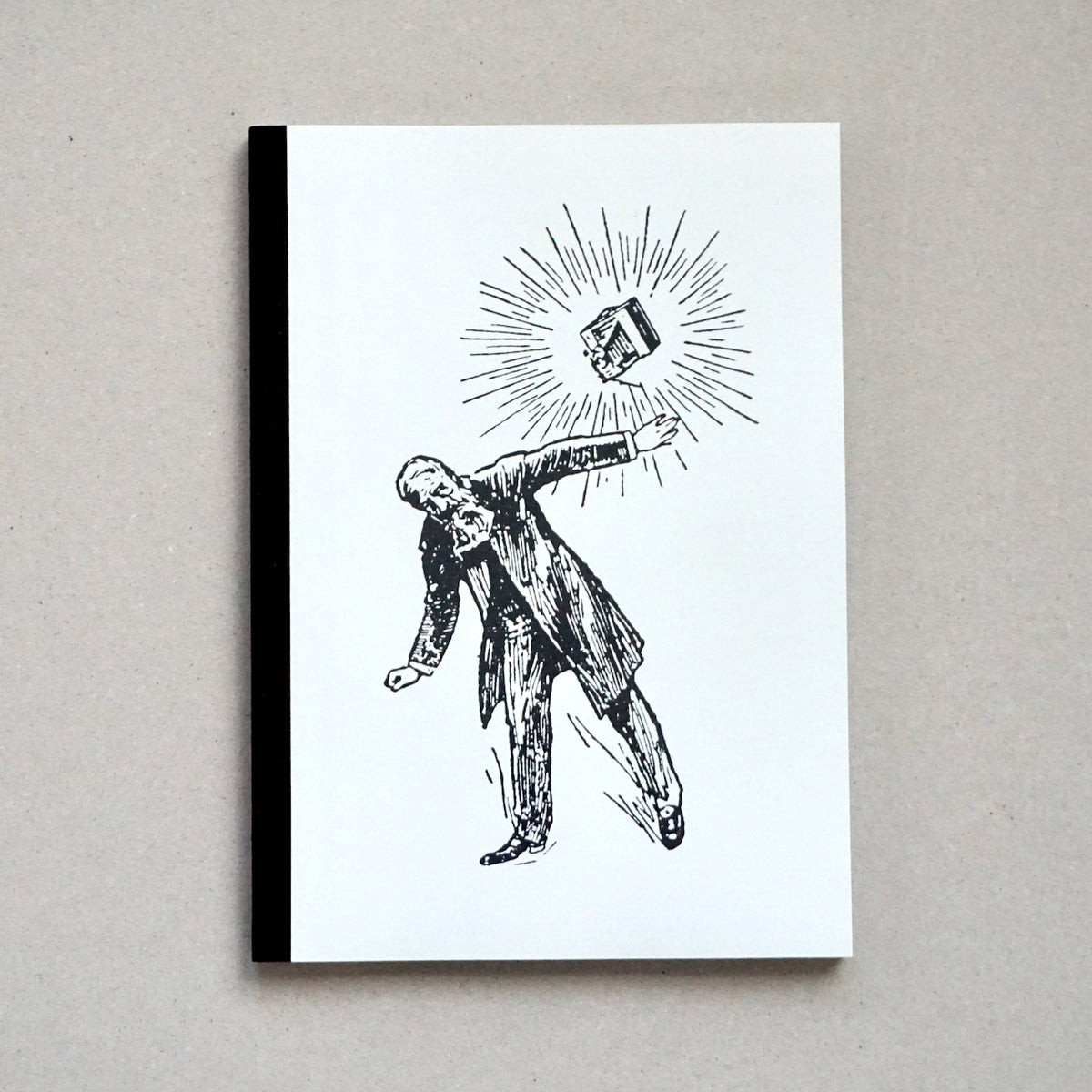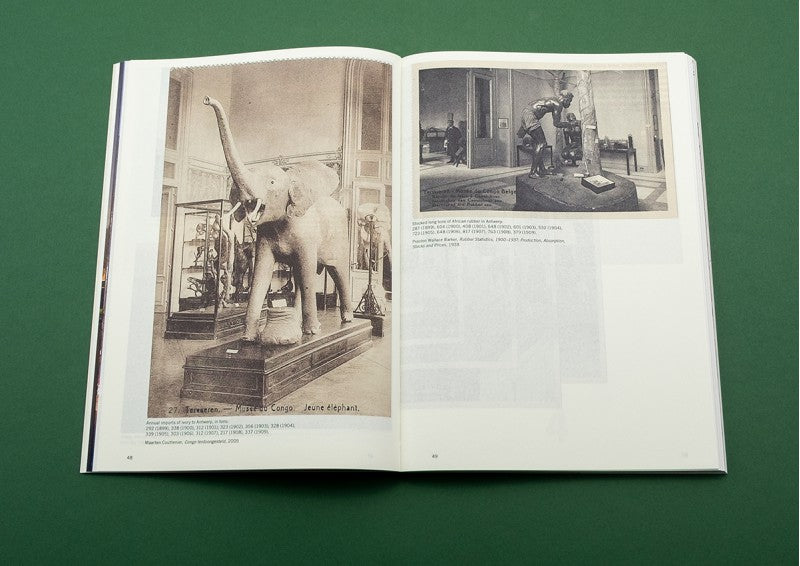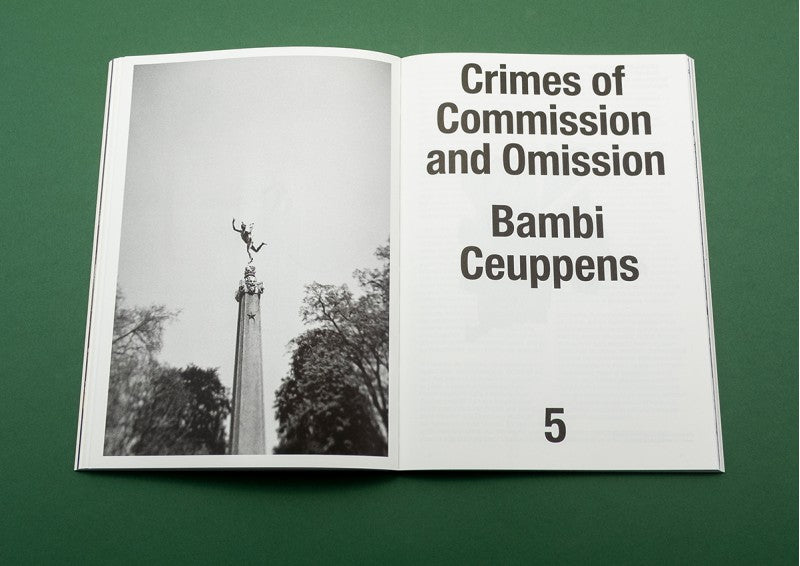





LEOPOLD'S LEGACY by Oliver Leu
| Title | Leopold's Legacy |
| Author(s)/Editor(s) |
Oliver Leu |
| Publisher | The Eriskay Connection |
| Pages | 152 |
| Dimensions |
170 x 250 mm |
| Format | Softcover |
| Year | 2020 |
Leopold’s Legacy is a reflection on both the visible representations of colonialism in present-day Belgium, and the hidden traces of its gruesome past. Oliver Leu (DE) presents an eclectic collection of visual research, focusing on various topics from colonial monuments and prestigious architecture to antique postcards and collaged sculptures for alternative monuments. All these remnants of a once glorious past paint a wry story of decades of structural exploitation and genocide, and demonstrate how in Europe our collective perception of these events is gradually changing.
At the Berlin Conference in 1885, King Leopold II of Belgium was proclaimed the founder and sole owner of the Congo Free State, by convincing the colonial nations of Europe to commit to common trade and improving the lives of the native inhabitants. But in reality he extracted a fortune from the territory. Initially by the collection of ivory, but since the invention of the rubber wheel by Dunlop in 1888, mostly by exploiting the Congolese people to harvest and process rubber. His administration of the Congo was characterised by forced labour, torture and murder, causing the deaths of millions of Congolese people. A large part of the monetary gains from this exploitation was spent on public and private construction projects in Belgium that are often still part of our urban space.
With Leopold’s Legacy, Leu paints the portrait of an ambitious ruler with delusions of grandeur, and the influence the exploitation of his private colony still has on his home country today.
Including an introductory text by Professor of History, Matthew G. Stanard, and an extensive essay by Bambi Ceuppens, researcher at the Royal Museum for Central Africa in Tervuren.
-
Title
Leopold's Legacy
-
Author / Editor
Oliver Leu
-
Publisher
Eriskay Connection
-
Pages
152
-
Dimensions
170 x 250mm
-
Format
Softcover
-
Year
2020
Shipping Terms
Delivery
We aim to process orders within 1–2 working days. Orders placed on a Saturday and Sunday will be processed from the next working day. If you need something in a hurry please call or email us before placing an order to ensure the item is in stock.
UK
All mainland UK orders are sent using Royal Mail, which usually arrives within 1–2 working days after despatch. We use Parcelforce and DHL on heavier or bulkier orders, which can take 2 working days to arrive. Royal Mail Signed For, Parcelforce and DHL all require a signature as proof of delivery. Please note that postage costs for addresses that are not mainland UK may vary.
European Union and Single Market
Please note that due to the introduction of the General Product Safety Regulation (GPSR) in December 2024, we are no longer able to ship to the EU and Single Market (including Northern Ireland). This does not affect items such as workshop bookings, Studio Passes, or Gift Vouchers.
International
Please note that LCBA cannot be held responsible for any import duties, taxes or delays in processing once your order arrives in-country. It is important that international orders include a contact telephone number and email address at checkout in the instance that the carrier needs to contact you for taxes and/or duties to be paid.
Out of Stock
We make every effort to ensure all products are in stock, but in the event of us not having your chosen product we will contact you and offer either a refund or a split- or later delivery if possible.
Returns
We hope you are happy with your purchases from London Centre for Book Arts, but if not, we can offer a refund on any item as long as it is returned in a saleable condition within 30 days of receiving your item. Please note that we are unable to reimburse postage costs for returns. For further information, or to make a return, write to us atorders@londonbookarts.org.